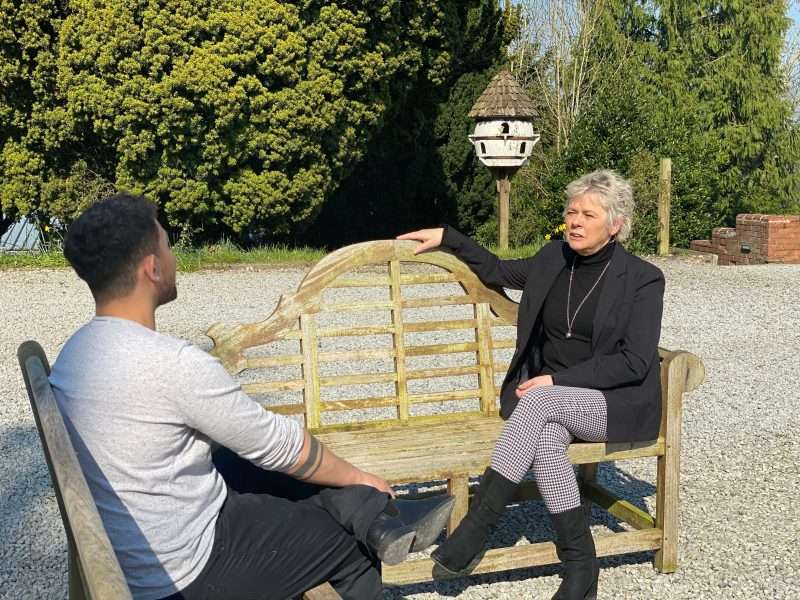You’ve probably heard the term legal highs – substances engineered within legal loopholes to mimic the effects of illicit drugs. These designer substances are a persistent problem for regulators, with new variations continually emerging. Often, each iteration is more potent than the one that came before, as creators and legislators engage in a dangerous game of cat-and-mouse.
In the UK, significant measures were taken in 2016 to ban legal highs. However, the adaptive nature of the market means that as soon as one substance is banned, chemists can modify the molecular structure slightly to create a new psychoactive drug that falls outside the current legal definitions. While it is legal to possess legal highs, it is illegal to sell for human consumption
Meanwhile, these highly addictive substances pose a serious risk to users. Many young people consume these drugs, attracted by the “legal” label, without knowing what is in them or how their bodies will react to them.
We are going to take an in-depth look at legal highs, their negative effects, and the risks of addiction. We will also discuss the treatment options available if you or a loved one is suffering from legal high addiction.
Key Takeaways
- Legal highs evolved to circumvent regulations, fuelling a market of designer drugs and synthetic compounds.
- New Psychoactive Substances (NPS) pose serious health risks, including addiction and potential for overdose.
- The Psychoactive Substances Act of 2016 is an example of the UK government’s efforts to regulate and control the distribution of legal highs.
- Legal high addiction is a serious health risk with long-term consequences that should be taken seriously.
The Origins of Legal Highs
The origins of what is commonly referred to as “legal highs” can be traced back to the innovative work of a chemist known as Dr Zee. He was instrumental in the development of Novel Psychoactive Substances (NPS), such as mephedrone, laying the groundwork for a rapidly expanding market fraught with regulatory and health challenges.
Dr. Zee’s vision was to create substances that mimicked the effects of traditional drugs yet skirted existing drug laws. His work opened a Pandora’s box, with over 560 new substances entering the market since the mid-2000s.
You might have seen these products, often dubbed as bath salts, herbal incense, or research chemicals, and marketed in ways that cleverly circumvented legal restrictions.
The highly dangerous Mephedrone, for instance, was sold as “plant food” as a way of getting around the law.
The surge in popularity of legal highs has a dark side. Reports of adverse effects, severe harm, and even deaths began to emerge, dampening the initial enthusiasm surrounding these substances. The novelty and accessibility of NPS led to widespread use, but with little understanding of their long-term health implications, incidents of poisoning, addiction, and other health crises became increasingly common.
In response, the UK enacted the Psychoactive Substances Act in 2016, a drugs act that aimed to stop the spread of NPS. This legislation marked a significant milestone in the ongoing battle against NPS by prohibiting the production, distribution, sale, and supply of psychoactive substances, with specific exemptions for substances like alcohol, tobacco, and caffeine.
The Act was a testament to the growing recognition of the complex issues legal highs present, highlighting the critical need for comprehensive regulatory strategies to safeguard public health.

Download our Brochure
The Rise of Legal Highs (2008-2009)
Legal highs grew in popularity between 2008 and 2009. Substances like mephedrone, spice, and bath salts emerged as popular legal highs, accessible through head shops and online platforms. They claimed to be a legal alternative with similar effects to other substances.
This period marked a significant shift in drug culture, as these substances became household names despite their negative impact.
These synthetic drugs, particularly mephedrone, were known for their strong stimulant effects, akin to MDMA or cocaine, and they attracted many users. However, their rise in popularity brought to light serious concerns regarding safety and the potential for addiction. Many people underestimated the health problems associated with these drugs simply because they were so accessible and commonly sold.
Deaths Associated With Legal Highs
With the rise in popularity of legal highs between 2008 and 2009, a disturbing increase in fatalities was also noted. The allure of synthetic cannabinoids, often perceived as safe alternatives to traditional drugs, led to a tragic underestimation of their potential for legal high addiction and severe effects from abuse.
Reports of users suffering from paranoid delusions, sudden collapses, and seizures are proof of the grave health consequences associated with these substances. Deaths linked to legal highs soared alarmingly from 10 in 2009 to 68 in 2012 in England and Northern Ireland.

We Know That Recovery Is Possible.
Regulatory Challenges and Responses
The Psychoactive Substances Act of 2016 marked a significant turning point in the UK’s battle against legal highs, leading to arrests and the closure of numerous websites.
NPS retailers, adapting to evade law enforcement, have relocated their operations, making detection and control more complex. This cat-and-mouse game shows the market’s adaptability and the continuous need for innovative regulatory responses.
Global Trends in Use and Control
In recent years, over 560 legal highs have emerged globally, presenting unprecedented challenges for regulatory control and public health safety. We are currently witnessing a rapid evolution in the landscape of psychoactive drugs, where NPS continually challenge existing legal frameworks.
The allure of these legal highs, including synthetic cannabinoids, hasn’t only led to widespread use but also to a surge in symptoms of legal high addiction symptoms, impacting individuals and communities.
The damage caused by NPS disproportionately affects vulnerable populations. Homeless individuals and prisoners, often with limited resources and support, are particularly exposed. For their sake, and that of all individuals suffering from addiction to legal highs, there is an urgent need for comprehensive strategies that go beyond prohibition, focusing on education, harm reduction, and accessible treatment options.
The persistent challenge lies in staying ahead of the rapidly evolving market for these illicit substances. The internet, with its ability to facilitate discreet trade and spread information, further complicates regulatory efforts.
In this ongoing battle, compassion, innovation, and international cooperation are key to safeguarding public health and curbing the rise of legal high addiction.
Popular New Psychoactive Substances (NPS)
The emergence of popular New Psychoactive Substances (NPS) like Black Mamba and K2 has significantly impacted both public health and regulatory efforts. These synthetic cannabinoids, often mislabelled as harmless ‘legal highs,’ have resulted in severe health effects and even deaths, underscoring their negative consequences and the urgent need for effective drug control strategies.
Other psychoactive substances, including 2C-B, remain popular within the UK’s club scene due to their similarities with MDMA, a potent psychoactive stimulant with lasting effects. These substances provide a sense of euphoria coupled with hallucinogenic properties, which can cause serious mental health issues when abused.
If you find yourself using these illegal drugs frequently or know someone close to you who is, reaching out for help sooner rather than later can prevent the problem from getting worse.
How to Tell if You Have an Addiction to Legal Highs
The term “legal high” might give the impression that such synthetic substances are safe to consume, but nothing could be further from the truth. The risks of overdose, addiction and long-term damage to your health are very real. That’s why it is important to recognise an addiction to legal highs early so you can nip it in the bud.
Addiction to these substances can manifest in both psychological and physical forms. One of the most telling signs is an intense craving for the drug, accompanied by a compulsion to use it despite being aware of its negative consequences.
Withdrawal symptoms, which can include nausea, mood swings, and changes in physical appearance, including weight loss, signal physical dependence on these synthetic substances.
Some of these symptoms can emerge shortly after the last dose, indicating the highly addictive nature of legal highs.
Individuals may start to exhibit noticeable changes in their behaviour, such as isolating from loved ones, neglecting responsibilities, or experiencing legal problems related to drug use. The impact on cognitive function and the central nervous system can lead to distorted perceptions and a high risk of engaging in dangerous activities.
The addiction can also strain professional and personal relationships, as the individual prioritises substance use over other aspects of life.
Another red flag is the continued use of legal highs despite suffering from health issues, financial problems, or legal challenges. This persistent use, even in the face of such negative consequences, is a sign of addiction.
Substance misuse, particularly when it involves highly dangerous synthetic stimulants or hallucinogenic drugs, can lead to a distorted sense of reality, which makes it hard to realise you need help.

If You Are Concerned About Addiction
If you or someone you know is showing signs of a ‘legal high’ addiction, take action today.
Recovery may seem daunting, especially considering the withdrawal symptoms and the mental health challenges that often accompany addiction to legal highs. However, you can recover, and we are here to help you.
Smarmore Castle has a team of experienced healthcare professionals, and we offer free, confidential consultations to discuss treatment plans.
It is important to know that there are a range of treatment options available to support your recovery. Residential treatment at Smarmore offers a structured environment where you can focus solely on getting better, away from the triggers of daily life.
Our programmes provide a community of support, helping patients navigate the complexities of addiction through shared experiences and mutual support.
Some individuals might prefer outpatient treatment, which includes therapy and counselling. Support groups specifically tailored to those struggling with drug addiction can offer invaluable encouragement and understanding.
These groups, including NA and CA, create a safe space for discussing challenges, sharing victories, and learning coping strategies from those who’ve walked a similar path.
Remember, reaching out for help is a sign of strength. With the right support and treatment, you can overcome addiction and start building a fulfilling life free from drug use.



